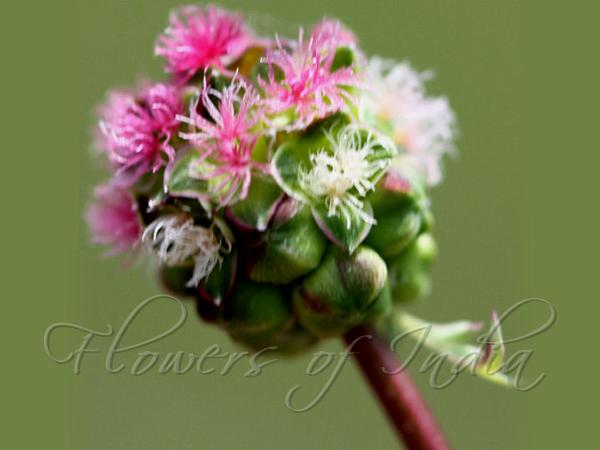|
| Salad Burnet |
|

|

| File size | 59296 |
| Original date | 5/6/12 2:27 PM |
| Resolution | 676 x 507 |
| Flash | Flash did not fire, auto |
| Focal length | 100.0mm |
| Exposure time | 1/200s |
| Aperture | 3.5 |
| Focus Distance | |
| Metering Mode | Multi-segment |
| Camera make | Canon |
| Camera model | Canon EOS 550D |
| Sensor type |
|
|
|
|
Photo: |
Botanical name: Sanguisorba minor Family: Rosaceae (Rose family)
Synonyms: Poterium sanguisorba
Synonyms: Poterium sanguisorba
Salad Burnet is a perennial
herbaceous plant growing to 1-3 ft tall, typically found in dry grassy
meadows, often on limestone soils.
The mound is formed by pinnately compound leaves about
1 ft long that arch gracefully outward from the center of the plant.
The rachis is wiry, and the 6-10 pairs of leaflets are more or less
rounded, about 2.5 cm across, and have toothed margins. Tiny purplish
or pinkish flowers are borne in compact thimble shaped heads about a
1.3 cm in diameter on flowering stalks that stand 1 ft or so above the
leaves. The flowers within the heads are male at the bottom, bisexual
in the middle and female at the top. Although interesting, the
inflorescence is not at all showy. It is used as an ingredient in both
salads and dressings, having a flavor described as "light cucumber" and
is considered interchangeable with mint leaves in some recipes,
depending on the intended effect. Typically, the youngest leaves are
used, as they tend to become bitter as they age.
Salad burnet is a plant native to Europe to Mediterranean, Afghanistan and
West Himalaya.
| Identification credit: Gurcharan Singh | Photographed in Cheshme Shahi, Srinagar, Kashmir. |
• Is this flower misidentified? If yes,